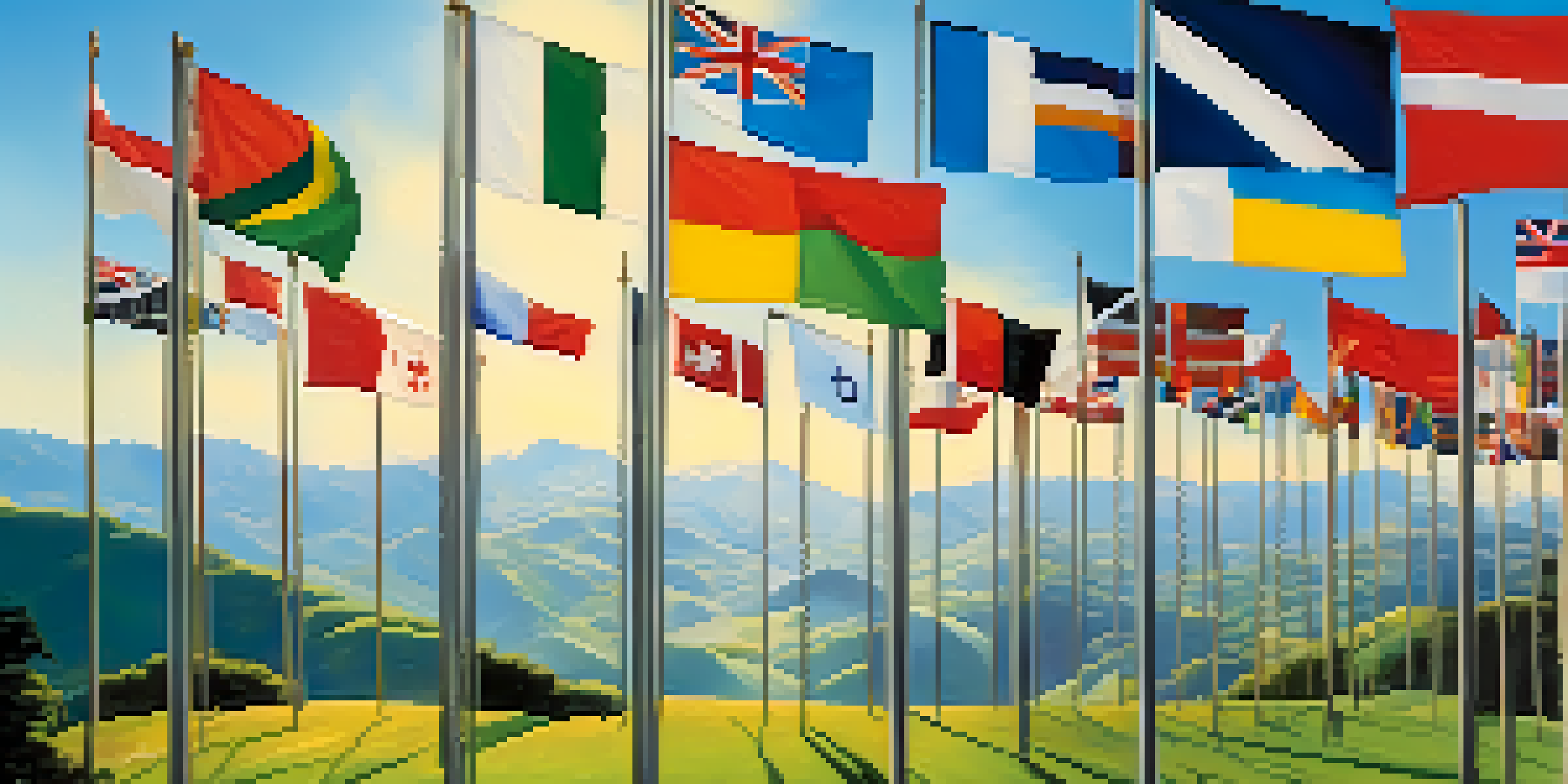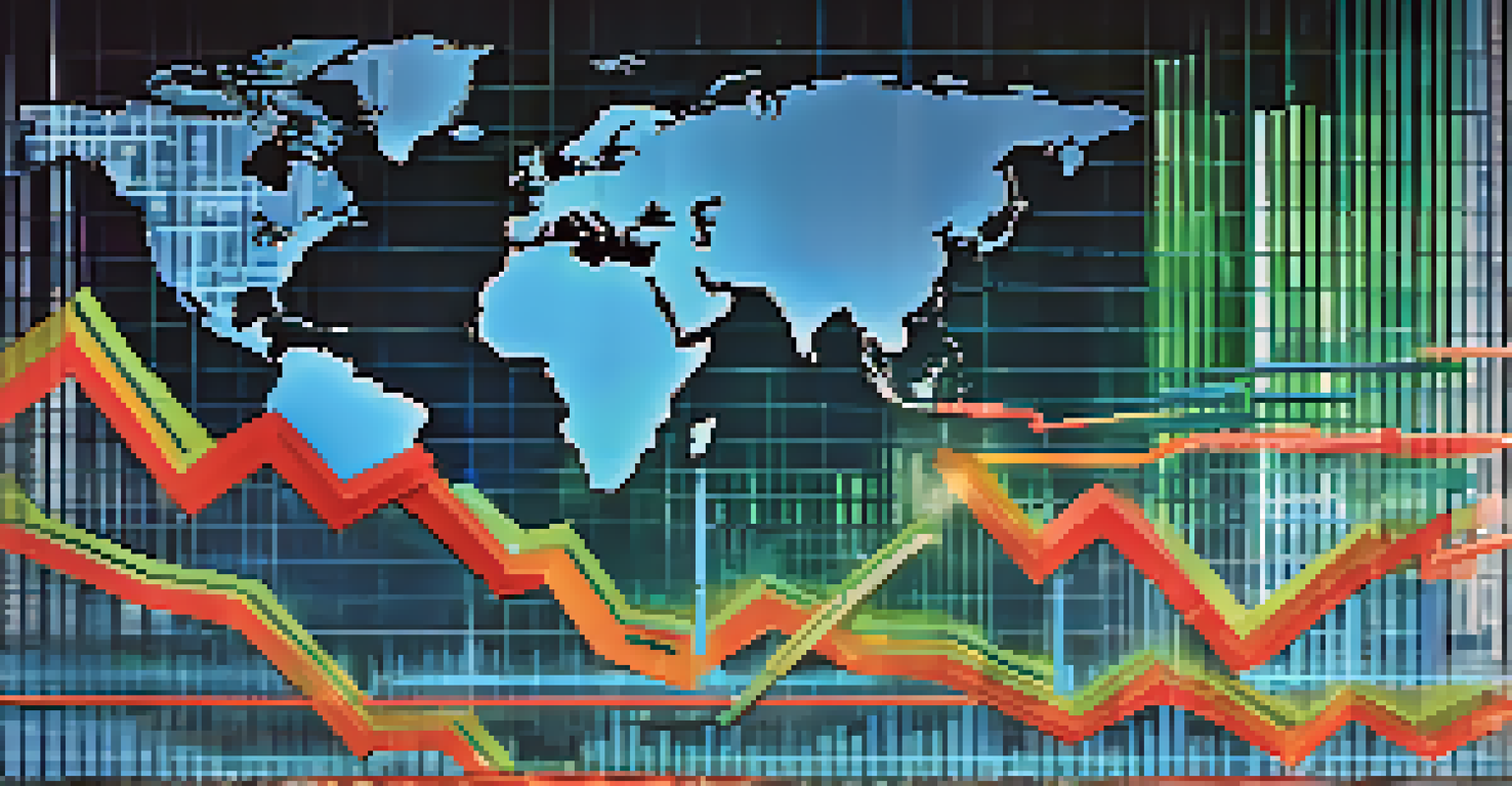Exploring Globally Diversified Mutual Funds for Investors

What Are Globally Diversified Mutual Funds?
Globally diversified mutual funds are investment vehicles that pool money from multiple investors to purchase a wide variety of international assets. These funds aim to spread risk across different markets and sectors, which can help mitigate losses during economic downturns. Essentially, they allow investors to access a broader range of investment opportunities beyond their local markets.
Diversification is the only free lunch in investing.
Imagine you’re at a buffet, and instead of filling your plate with just one dish, you sample a bit of everything. This approach not only makes your meal more interesting but also ensures you enjoy a mix of flavors. Similarly, globally diversified mutual funds offer investors a taste of different economies, currencies, and industries, enhancing their overall investment experience.
In a world where market conditions can change rapidly, diversification can serve as a safety net. By investing globally, you’re not putting all your eggs in one basket, which can lead to more stable returns over time.
The Importance of Diversification
Diversification is a fundamental principle in investing, as it reduces risk by allocating investments across various financial instruments, industries, and other categories. In the context of globally diversified mutual funds, it means that if one market suffers, others may perform well, balancing out potential losses. This is particularly important in today's interconnected global economy, where events in one country can impact markets worldwide.

Consider a scenario where you invest solely in your home country's stock market. If that market experiences a downturn due to local issues, your entire portfolio may suffer. However, by diversifying globally, you're less likely to be affected by any single economy's performance, as you would have investments in various regions.
Benefits of Global Diversification
Globally diversified mutual funds help spread risk by investing in a variety of international assets, providing a more stable return.
Thus, diversification not only helps to manage risk but can also provide opportunities for growth. By tapping into emerging markets or sectors that are thriving, you could potentially boost your returns.
How to Choose the Right Fund
Choosing the right globally diversified mutual fund requires careful consideration of several factors, including your investment goals, risk tolerance, and time horizon. Start by evaluating what you want to achieve: Are you looking for long-term growth, income, or a combination of both? Knowing this will help narrow down your options.
The stock market is filled with individuals who know the price of everything, but the value of nothing.
Next, take a closer look at the fund's historical performance, fees, and the expertise of its management team. You want to ensure that the fund has a track record of navigating various market conditions. Think of it like hiring a tour guide; you’d want someone experienced who knows the ins and outs of the territory you’re exploring.
Finally, consider the fund's asset allocation strategy. A well-diversified fund should have exposure to different regions and sectors, which can enhance its resilience against market fluctuations. This multi-faceted approach can provide a smoother investment journey.
Understanding Fees and Expenses
Like any investment, globally diversified mutual funds come with fees and expenses that can impact your overall returns. These may include management fees, expense ratios, and sometimes sales loads. It's crucial to understand these costs before investing, as they can eat into your profits over time.
To put this into perspective, think of it like a subscription service; the more you pay in fees, the less value you get from your investment. A fund with high fees may need to outperform significantly just to match the returns of a lower-cost option. Therefore, it's wise to compare different funds and choose one that offers a balance between quality management and reasonable fees.
Choosing the Right Fund
Selecting the right globally diversified mutual fund requires evaluating your investment goals, risk tolerance, and the fund's performance.
Moreover, be mindful of how fees are structured. Some funds may charge a flat fee, while others may have performance-based fees. Understanding these nuances can lead to smarter investment decisions that align with your financial goals.
The Role of Currency Risk
Investing in globally diversified mutual funds also means dealing with currency risk. When you invest in assets denominated in foreign currencies, changes in exchange rates can impact your returns. For instance, if you invest in a fund with holdings in Europe and the Euro weakens against your home currency, your returns may diminish even if the underlying assets perform well.
Think of it like traveling abroad; if the exchange rate isn’t favorable, you might find that your money doesn’t stretch as far as you thought. Similarly, currency fluctuations can either enhance or reduce your investment gains, depending on the direction of the exchange rates.
As an investor, it’s essential to consider how much exposure to foreign currencies you're comfortable with. Some funds may hedge against currency risk, while others may not. Understanding this aspect can help you make more informed decisions and better manage your investment strategy.
Market Trends Impacting Global Investments
The landscape of global investing is constantly evolving, influenced by various market trends such as economic growth rates, geopolitical events, and technological advancements. Keeping an eye on these trends can help you make timely investment decisions and adjust your portfolio as needed. For example, a booming tech sector in Asia might present new opportunities for growth.
Consider the impact of climate change; as countries shift towards greener technologies, investments in renewable energy could yield significant returns. On the other hand, economic downturns or political instability in certain regions can pose risks. Staying informed about these market dynamics can provide valuable insights into where to allocate your investments.
Understanding Fees Impact Returns
Awareness of fees and expenses associated with mutual funds is crucial as they can significantly affect your overall investment returns.
Ultimately, understanding market trends can empower you to take advantage of opportunities while mitigating risks. A proactive approach to global investing can lead to a more resilient and rewarding investment experience.
The Future of Globally Diversified Mutual Funds
As the world becomes increasingly interconnected, the future of globally diversified mutual funds looks promising. More investors are recognizing the importance of diversifying their portfolios beyond domestic markets, leading to a growing demand for these funds. This trend is likely to continue as people seek to tap into the potential of emerging markets and global economic growth.
Additionally, advancements in technology are making it easier for investors to access and manage their global investments. With the rise of robo-advisors and online platforms, even small investors can now build a diversified international portfolio with relative ease. It’s similar to how online shopping has revolutionized the way we buy goods; investing is becoming more accessible than ever.

In conclusion, the landscape of globally diversified mutual funds is evolving, presenting exciting opportunities for investors. By staying informed and adaptable, you can position yourself to take advantage of this growing market and enhance your investment strategy.